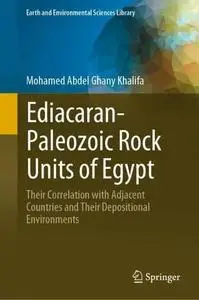Ediacaran-Paleozoic Rock Units of Egypt: Their Correlation with Adjacent Countries and Their Depositional Environments by Mohamed Abdel Ghany Khalifa
English | PDF | 2023 | 222 Pages | ISBN : 3031273192 | 13.3 MB
This book presents the following geological contributions in Ediacaran and Paleozoic rocks. 1) It introduces four new rock units for the first time, the Ediacaran El Urf Formation (volcanoclastic sediments in the central Eastern Desert), the Ediacaran Abu Haswa Formation (stromatolitic dolostone in southwestern Sinai), the Early Permian Wadi Dome Formation (mixed clastics and carbonates in the west of Suez Gulf) and the Early Permian Misawag Formation (in the subsurface, northwestern Desert), 2) making correlation of the Ediacaran rock units with the corresponding rock units in Libya, Jordan, Iraq and Saudi Arabia, 3) linking the exposed Paleozoic rock units with their equivalent rock units in subsurface in northwestern desert, 4) correlating the Paleozoic rock units with the equivalent rock units in adjacent countries, e. g. Libya, Jordan, Iraq and Saudi Arabia, 5) manifesting the possible depositional environments of the Ediacaran and Paleozoic rock units.



